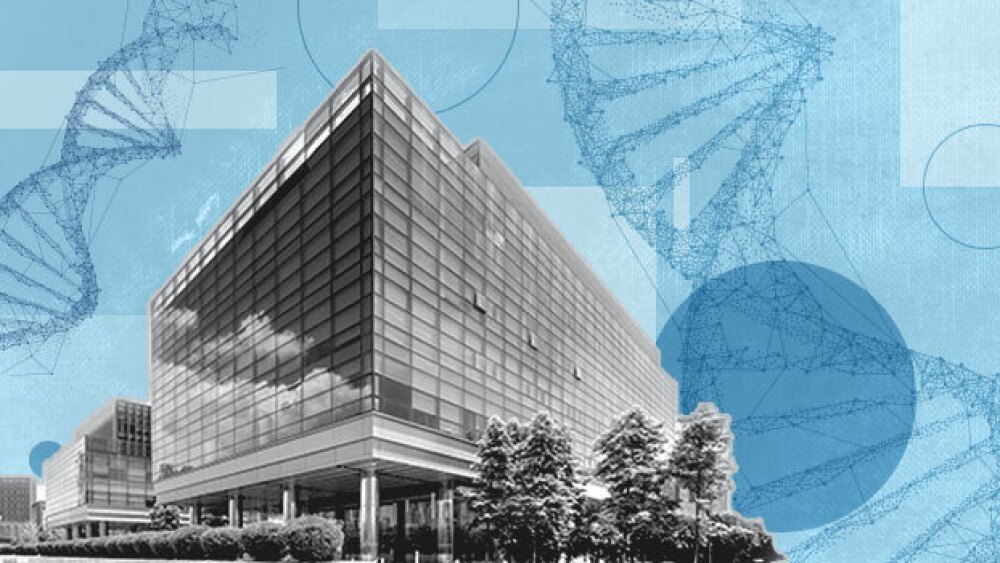During its third-quarter earnings call Monday, BrainStorm Cell Therapeutics emphasized its commitment to seek an advisory committee meeting for NurOwn in ALS.
BrainStorm EVP and Chief Development Officer Stacy Lindborg, Ph.D./courtesy of BrainStorm Cell Therapeutics
After receiving a Refusal to File (RTF) Letter regarding a BLA for NurOwn in ALS, BrainStorm Cell Therapeutics emphasized its commitment to seek an advisory committee meeting through a Type A meeting with the FDA.
On its Q3 earnings call Monday, the BrainStorm brass, which included Chief Executive Officer Chaim Lebovits, President and CMO Ralph Kern, M.D. and EVP and Chief Development Officer Stacy Lindborg, Ph.D., expressed their collective belief that current data from the Phase III trial should be sufficient for a BLA.
While Lebovits called the RTF letter “a big bump in the road”, the executives maintained a positive forward-looking note throughout the call.
Lebovits stated two primary issues outlined in the RTF: the first, in clinical and statistics; the second in chemistry, manufacturing and Controls (CMC).
BrainStorm spent the majority of the call focused on the former, with Lebovits saying it was clear that the regulator still sought “substantial evidence defined by statistically significant results as measured by the endpoints of the Phase III trial.”
NurOwn, which is comprised of autologous mesenchymal stem cells (MSCs) and neurotrophic factors (NTFs), failed to meet statistically significant efficacy endpoints in a Phase III trial where it was being assessed to treat ALS. Top-line results of the trial were first reported in November 2020.
“We also believe there needs to be flexibility and urgency in the review of drugs for ALS,” Lebovits continued. “We believe it is more than reasonable to expect that the FDA will allow an open and fair hearing in a public venue.”
Lindborg highlighted analyses of the Phase III data presented at the 5th Annual ALS One Research Symposium in October and the 21st Annual NEALS Meeting in early November.
“Consistent patterns were observed across biomarkers in subgroups,” she said. Specifically, BrainStorm “observed decreases in pro neuroinflammatory and neurodegenerative markers and increases in neuroprotective and anti-inflammatory markers,” in participants treated with NurOwn compared to placebo.
Lindborg emphasized that the analyses showed NurOwn had a biological effect in all trial participants “regardless of the level of disease progression at baseline.”
BrainStorm ran into challenges with the so-called “floor effect” in this trial. At NEALS, Lindborg presented data from a sensitivity analysis looking at the total score threshold and item level threshold.
The results showed that “after controlling for the impact of the ALSFRS-R floor effect, all participants treated with NurOwn had a higher rate of clinical response and less function loss across 20 weeks compared to placebo,” Lindborg said.
BrainStorm plans to discuss these recent analyses with the FDA during the Type A meeting.
Lindborg added that a confirmatory trial could be an end result of a Type A meeting.
Kern said the regulatory process allowed Amylyx’s Relyvrio, which included two separate adcomm meetings, to underscore the importance of having an open discussion with clinicians and statisticians.
Kern also highlighted the “quite negative views on Relyvrio’s data” expressed in FDA guidance documents prior to its ultimate approval.
“We feel strongly that having an opportunity to have our BLA filed so that we can discuss our data in an adcomm is in the best interest of the ALS community,” Kern said.
Lindborg added that there are processes in place where an RTF letter can move to a BLA acceptance with an adcomm meeting to follow, saying there is precedent for such a move.
ALS Community Reacts
Reaction from the ALS community was swift, with many patients and advocates expressing their disappointment with the RTF.
“It is important for FDA to allow due process and for a public adcomm for NurOwn so the full data set can be shared and scientifically debated,” said Nicole Cimbura, co-lead for the I AM ALS legislative affairs team whose husband succumbed to the disease, in a statement to BioSpace. “In a disease like ALS that is 100% fatal and so heterogenous, a therapy that works even for a subset [of patients] must move forward.”
In a call with BioSpace Thursday, Dr. Merit Cudkowicz, chief of neurology at Massachusetts General Hospital and trial co-investigator, suggested there may be a difference in thinking between the Center for Drug Evaluation and Research (CDER), which reviewed Relyvrio, and the Center for Biologics Evaluation and Research (CBER), which is responsible for reviewing NurOwn.
Cimbura also mentioned this potential difference, saying, “It is concerning that CBER seems to have different views of regulatory flexibility and is behind CDER. Equity between FDA review divisions is integral to the process and confidence in the system.”
Cimbura added that Monday’s transparency regarding the RTF from BrainStorm was important.
“BrainStorm and the FDA CBER need to work on the ALS Clock,” she said.






